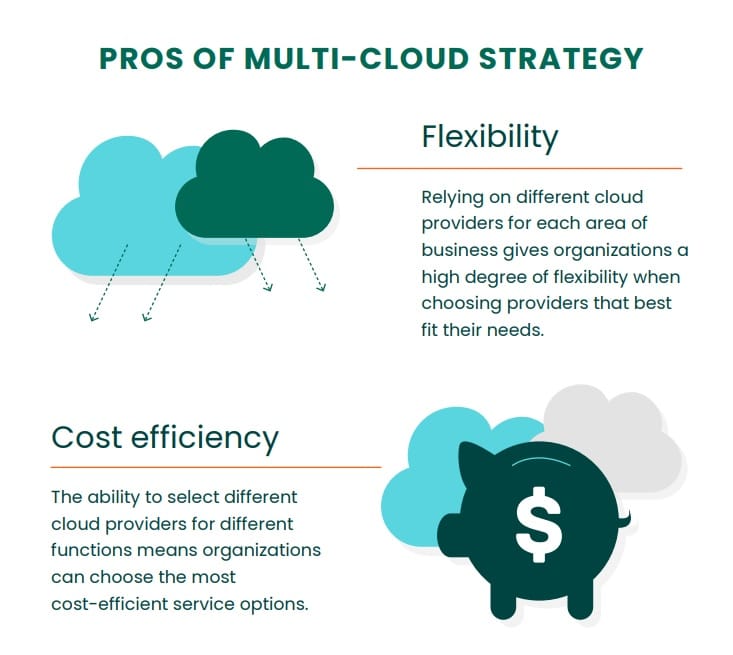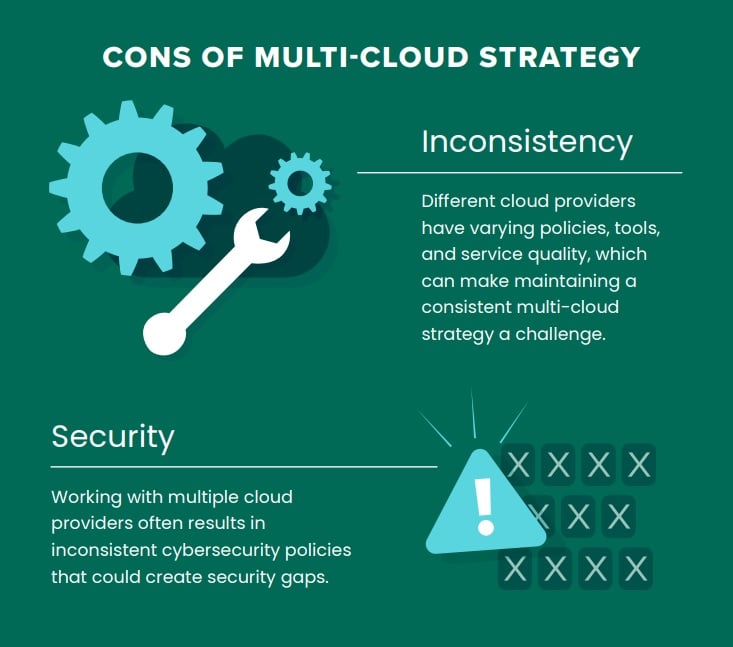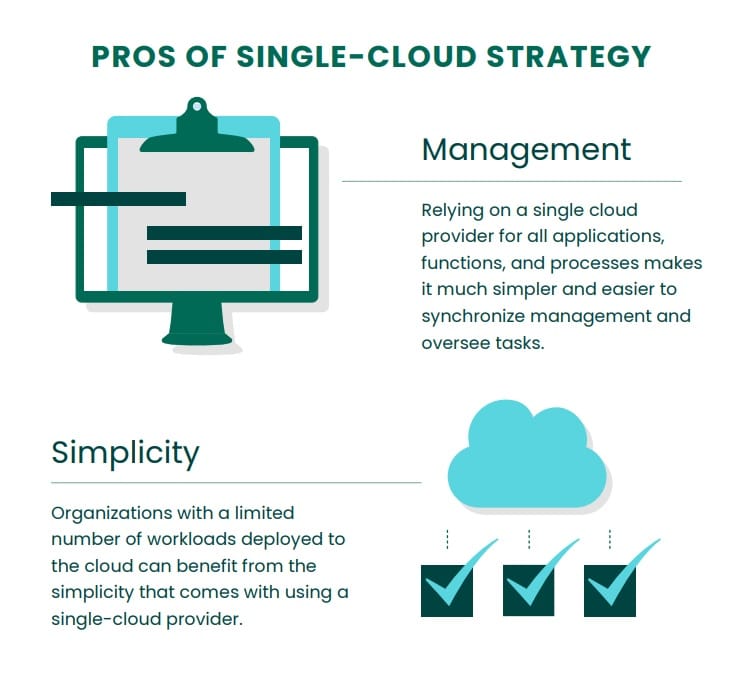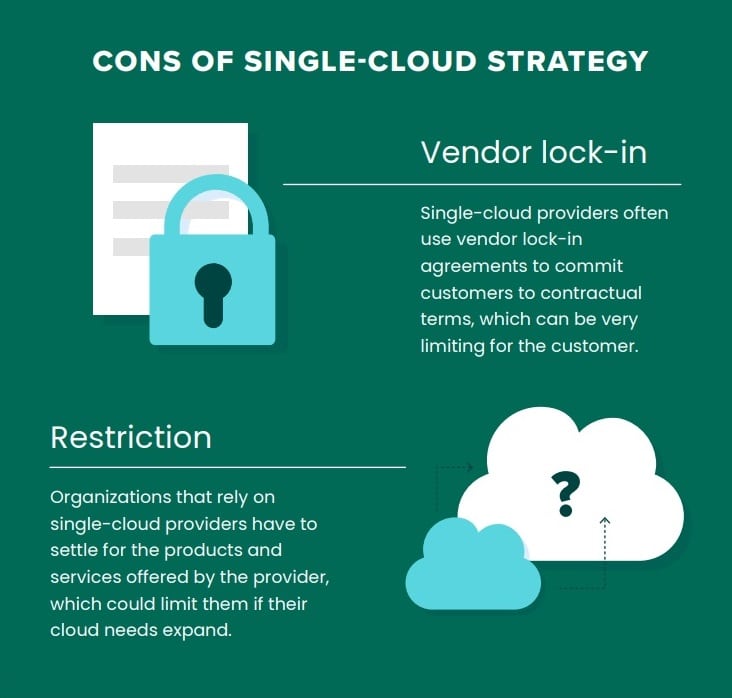Cloud computing is revolutionizing the way organizations operate, slashing costs, boosting efficiency, and making businesses more agile in an ever-changing digital landscape. As speed and adaptability become critical for success, companies are rapidly shifting more applications, assets, and workloads to public clouds.
And this momentum shows no signs of slowing down. A McKinsey & Co. study revealed that 55% of companies have ramped up their cloud migrations since 2020. Businesses are embracing different cloud strategies, with single-cloud and multi-cloud approaches emerging as the dominant choices. Each path comes with its own benefits, challenges, and security considerations — reshaping how organizations harness the power of the cloud.
What are Single-Cloud and Multi-Cloud Storage Systems?
The key difference between single cloud and multi-cloud rests primarily with the number of cloud service providers an organization works with. Organizations using a single-cloud strategy rely on one cloud storage provider to supply all their cloud storage needs and capabilities.
While there are some advantages to a single cloud provider strategy, by far the more widely used approach for modern enterprise is multi-cloud. According to Oracle, 76% of companies rely on more than one public cloud, a figure that jumps to at least three public clouds for organizations with revenue of more than $1 billion.
Multi-cloud refers to an organization’s use of more than one cloud vendor to support different applications, assets, and workloads. This approach gives organizations a much wider degree of flexibility, capabilities, and pricing options than a single-cloud approach. The industry’s leading cloud service providers are:
- Amazon Web Services (AWS)
- Microsoft Azure
- Google Cloud Platform (GCP)
The Hybrid-cloud environment
Many organizations hesitate to fully migrate their IT assets from on-premises infrastructure to the cloud—and for good reason. The transition can be complex, demanding significant resources, causing downtime, and introducing potential risks. However, businesses are finding a smarter path forward with hybrid cloud solutions. By seamlessly integrating public cloud, private cloud, and on-premises infrastructure, they gain the best of all worlds —flexibility, resilience, and control.
With a hybrid cloud approach, organizations can tap into the power of the cloud without the costly and disruptive process of overhauling their entire legacy systems. Instead, they modernize at their own pace while maximizing efficiency and innovation.
Comparing the Effectiveness of Multi-Cloud vs. Single Cloud
There are a number of pros and cons related to multi-cloud and single cloud that decision makers should consider before initiating their cloud deployment.
Pros & cons of the multi-cloud strategy
The pros:
- Greater flexibility: When organizations partner with multiple cloud providers, they can select those whose service offerings best match each specific area of their business. That ensures they gain access to the most appropriate range of capabilities for optimal performance and efficiency.
- More cost-efficient: Similarly, organizations can compare competitive price points between different service providers and opt for those that offer the best balance of pricing and service quality. This enables them to drastically reduce their cloud operational costs and IT spend.
The cons:
- Inconsistency: Every cloud service provider has a unique approach to cloud computing, often deploying unique tools, systems, and policies. Relying on multiple cloud providers means learning and engaging with a wide variety of different strategies. This can be disconcerting for employees who access multiple clouds.
- Security challenges: Cloud security is usually managed within the platform, using tools built by the cloud service provider. Although these tools are highly effective, their features and capabilities differ among cloud vendors. This approach can create inconsistency as it relates to cybersecurity for the organization. Ultimately, these inconsistencies can create cybersecurity gaps.
Advantages & disadvantages of the single-cloud strategy
The pros:
- Greater management: Outsourcing applications, functions, data, and workloads to a single cloud provider vastly simplifies orchestrating the management processes for the enterprise. This can help eliminate manual administrative tasks and give internal teams more resources to focus on higher priority items.
- Simplification: For businesses with a small number of applications and functions in the cloud, using a single-cloud provider can streamline their architecture without introducing significant drawbacks or limitations.
The cons:
- Vendor lock-ins: Organizations that partner with a single cloud provider often are locked into strict contractual terms. Lock-ins create challenges in modifying or ending the partnership, making it difficult to switch to a different cloud service if requirements evolve.
- Cloud inflexibility: Every cloud provider has a slightly different set of cloud services and specialties. Partnering with a single-cloud provider limits the enterprise to the service offerings of the lone provider, which could impose limitations on their flexibility if they want to expand beyond those core capabilities.
Security Risks of Multi-Cloud & Single-Cloud Environments
Regardless of which cloud storage model organizations choose, multi-cloud and single-cloud strategies share similar security challenges. These include:
Lack of visibility
It may be difficult for organizations to maintain complete visibility over security policies of their cloud environments.
Development outpaces security
Speed is critical for organizations in the modern economy. Cloud deployment and application development often vastly outpace the establishment of appropriate security policies.
Unsecure access
Users can access cloud applications from virtually any device or endpoint, including those outside the enterprise network, creating security vulnerabilities.
Multi-cloud environments have additional security challenges, including:
- Inconsistent cybersecurity protocols: Different cloud vendors use different tools, platforms, and policies to maintain data security. This can cause confusion for the enterprise.
- Access credentials: Many employees will require access credentials for multiple public clouds, complicating the enforcement of consistent privileged access policies throughout the organization.
- Inconsistent upgrades: Cloud service providers constantly upgrade their software to improve delivery and capabilities. However, this can create new security gaps that are amplified when enterprises must manage upgrades from multiple cloud providers.
Multi-Cloud & Single-Cloud Security Best Practices
Cloud security incidents are incredibly common. Sixty-five percent of organizations cite cloud security as one of their top priorities. For that reason, it’s critical organizations understand best practices for cloud security, so they know how best to protect their sensitive data from risk.
Multi-cloud and single-cloud security best practices include:
Automate where possible
Automating manual security tasks enables organizations to enhance the operability of their security processes while minimizing (or eliminating) human error.
Maintain contact with cloud service providers
Stay in contact with the cloud service providers to know about software updates and the tools to conduct proper oversight.
Consider cloud security from the beginning
When developing applications in the cloud, conduct a risk assessment at all development stage so potential security vulnerabilities are identified and addressed quickly.
Maintain visibility by investing in the right tools
Invest in cloud security solutions that synchronize security tools, processes, and cloud-based data in a centralized location. This facilitates enterprise visibility over all security information across your entire cloud infrastructure.
Understand responsibilities
Shared responsibility models obligate the cloud vendor and the enterprise to take some degree of ownership for cloud security. It’s important for organizations to understand both their own and the cloud provider’s obligations.
As organizations increasingly migrate and deploy applications and workloads to public clouds, cybersecurity must be top of the agenda.
Fortra’s Alert Logic’s cybersecurity experts provide enterprises with the tools, personnel, and solutions they need to conduct real-time detection, investigation, and remediation of all legitimate security threats facing their organization. We tailor our solutions to match the specific security requirements of your organization, so you stay resilient in the face of a constantly evolving threat landscape.
Get in touch with our team to schedule a demo to see how Alert Logic can enhance your cloud security.
Additional Resources:
Defining and Implementing a Multi-Cloud Strategy | Guide




